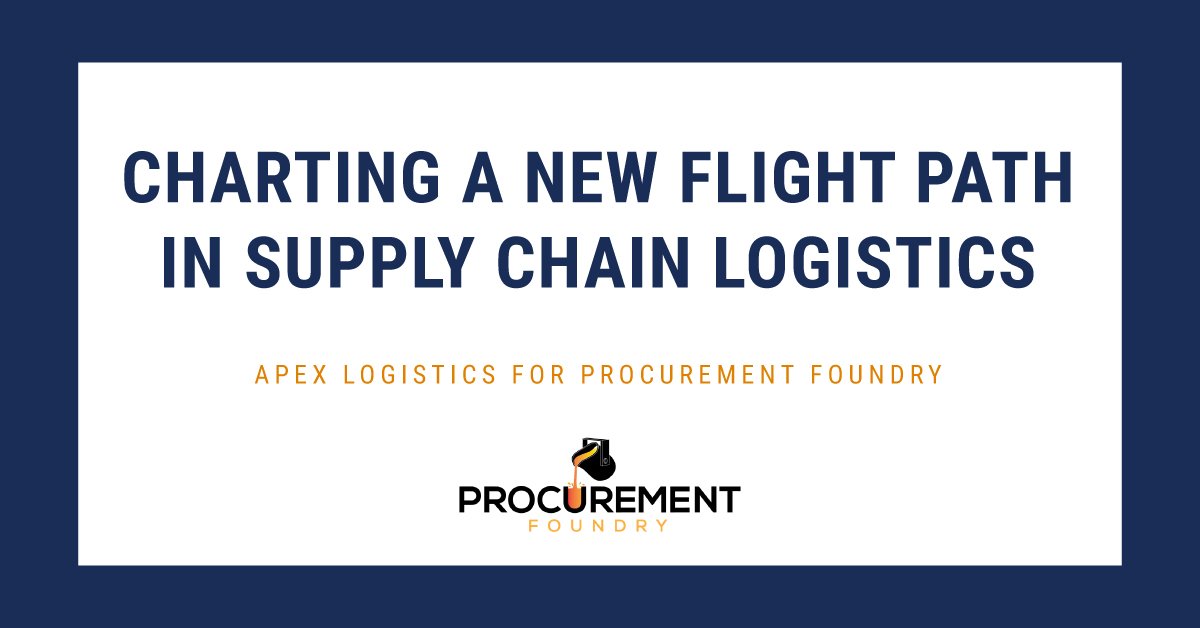Maximizing Savings Opportunities and Procurement's Strategic Value for CPOs
Saving money is not always about pinching pennies: advanced and data-driven insights enable you to identify real cost-saving opportunities, negotiate...

The January 29th, 2021 Air Cargo World article headline reads: “Apex reduces retailer lead times and costs, increasing air charters by 225%.”
Being a procurement professional, it is one of those headlines that immediately captivates your attention and piques your curiosity—especially given the supply chain logistics and shipping challenges organizations face because of the pandemic.
A previous Procurement Foundry article cited the difficulties Peloton has with delivering their products to meet increasing demand. The company, which provides in-home training equipment with virtual training sessions, began shipping by air instead of sea.
While some may see Peloton’s and other organizations’ decision to ship by air as a temporary response to an acute crisis, the progressive utilization of air charters was already underway before COVID-19.
Back in December 2017—which seems like a lifetime ago given this past year—GEP talked about the “trending boom of global air freight charter networks.”
Citing the challenges with relying solely on finding “belly space in commercial airlines to ship their cargo by air,” finding an alternative flight path for air shipments became a priority for businesses.
The first company to take advantage of private air freight networks was Amazon Prime. According to the article, Amazon secured “long-term contracts with air lessors” to not only increase shipping capacity but address the “slot constraints at airports” that were “choking the logistics environment.”
Interestingly, a similar “choking” situation was the impetus behind Peloton’s decision to take to the air. The only difference was that the congestion was at the sea shipping ports of Los Angeles and Long Beach.
That said, the measures taken by Amazon in 2017 were successful as the move to private air freight charters enabled the company—and those that followed—to “reduce their delivery times and streamline their supply chains.”
One of the interesting points that the 2017 article talks about is private air freight charter networks’ cost compared to blocking capacity on commercial and cargo airlines.
Traditionally, procurement professionals approach any expenditure in which there will be a cost increase with a high degree of scrutiny. As a result, it may be reasonable—at least with a periphery assessment—to think that a return to lower-cost transportation models of the past is inevitable once the crisis passes. However, and on closer review, that is not likely to be the case.
The earlier referenced Air Cargo World article reports that “eCommerce sales jumped by 30%” and with it consumer expectations for faster delivery times.
The fact is that consumers are willing to pay more to get what they want when they want it and will consistently deal with companies that can meet this demand. In short, brand loyalty and “faster deliveries with shorter lead times” go hand-in-hand.
Peloton recognized this when they took to the air to meet client demand. It is hard to imagine that most companies will not follow suit to remain competitive in their respective markets.

Saving money is not always about pinching pennies: advanced and data-driven insights enable you to identify real cost-saving opportunities, negotiate...

The topic of our recent roundtable discussion with a dozen Procurement Foundry community members—exploring potential flaws in procurement incentive...

Every 30 days or so, I get the same alert on my phone—“Your electricity bill is available for viewing.” I take a quick look, make sure nothing seems...